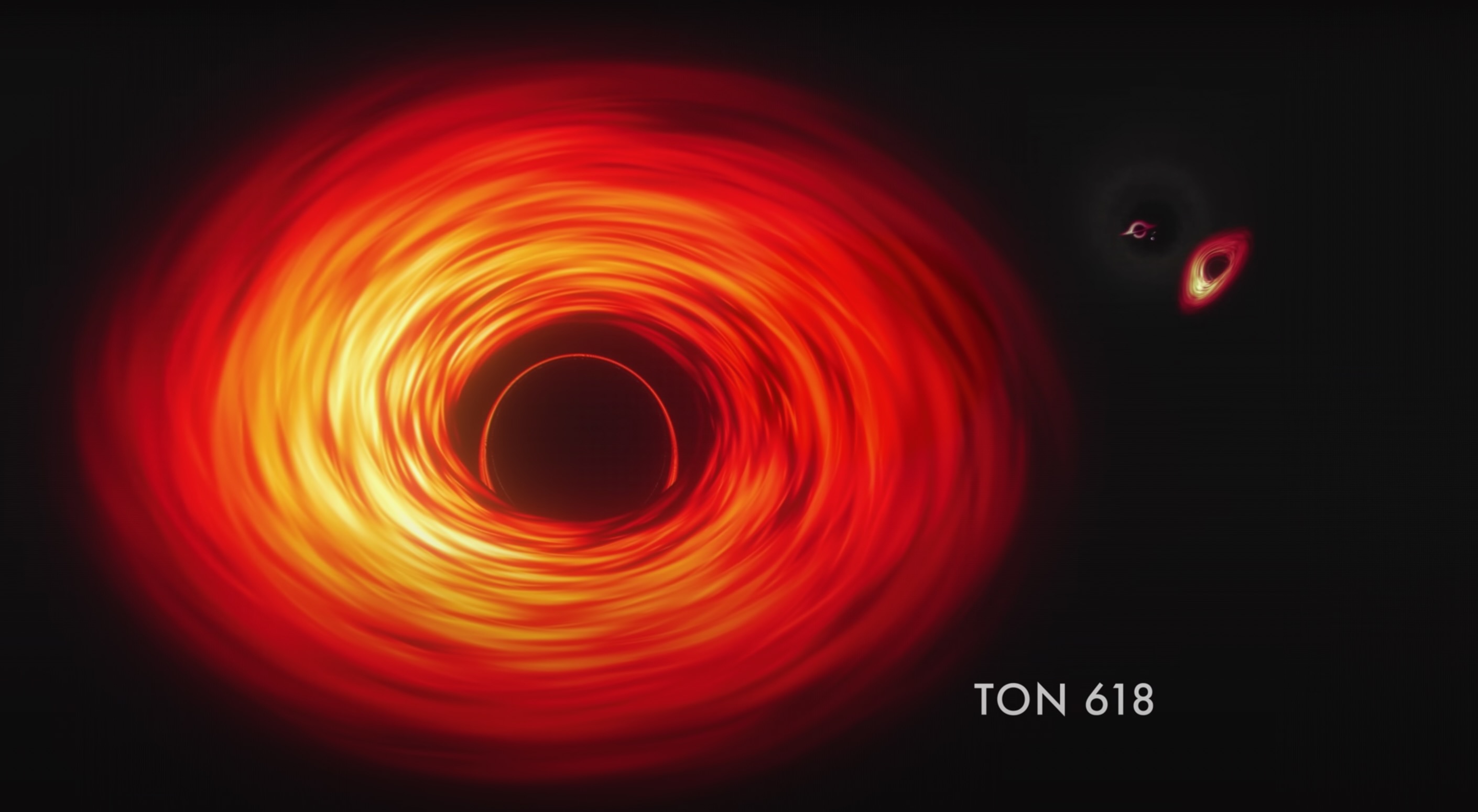
Astronomers may have discovered the first evidence of heavy black hole "seeds" in the early universe.
These so-called seeds could help explain how some supermassive black holes with masses equivalent to millions, or even billions, times that of the sun could have grown quickly enough to exist less than 1 billion years after the Big Bang.
Potentially, heavy black hole seeds are black holes with masses around 40 million time that of our sun. They are believed to form from the direct collapse of a massive cloud of gas, unlike your typical black hole that's born when a massive star reaches the end of its life and collapses under its own gravity. Galaxies theorized to host such heavy black hole seeds are referred to as Outsize Black Hole Galaxies (OBGs).
These galaxies are likely very distant, seen with our telescope as they were when our 13.8 billion-year-old universe was somewhere around 400 million years old. And now, scientists might've finally identified one of these OBGs.
Related: Gravitational waves show black holes prefer certain masses before they collide
The team, led by Center for Astrophysics Harvard & Smithsonian researcher, Akos Bogdán, first detected an object with a mass characteristic of black holes while investigating a quasar using the James Webb Space Telescope (JWST) and NASA's Chandra X-ray Observatory. Powered by supermassive black holes, quasars are extremely luminous, active hearts of galaxies. They can be so bright, in fact, that they outshine the combined light of every single star in the galaxy that hosts them.
The one studied by Bogdán and fellow researchers lives in a galaxy named UHZ1.
And, as it turned out, data from the JWST and Chandra regarding UHZ1 was consistent with what would be expected from an OBG. The team found X-ray emissions by tapping into Chandra, and these emissions indicated a feeding or "accreting" black hole associated with the quasar, which was particularly compelling in identifying the surrounding galaxy as an OBG.
The researchers also compared their observations to simulations of the rapid growth of heavy black hole seeds, finding that there was a good match between the two. The best fit they found during this comparison was with a 10,000-solar-mass seed growing over the course of several hundred million years.
"Based on the excellent agreement between the observed multi-wavelength properties of UHZ1 with theoretical model template predictions, we suggest that UHZ1 is the first detected OBG candidate, subject to spectroscopic confirmation of its redshift," the authors wrote in a paper explaining the discovery. "Therefore, as the first OBG candidate, UHZ1 provides compelling evidence for forming heavy initial seeds from direct collapse in the early universe."
How heavy seeds give black holes a growth boost
The tremendous size of supermassive black holes doesn't trouble scientists too much. That's because these cosmic titans have had billions of years to grow by feeding on surrounding gas and dust as well as by merging with other black holes. The one at the heart of the Milky Way, Sagittarius A* (Sgr A*), for instance had enough time to grow to around 4.5 million times the mass of the sun. The black hole at the heart of a galaxy named M87 managed to get even bigger, sitting at around 5 billion times the mass of our star.
But because these growth mechanisms are estimated to take place over billions of years, the discovery of similarly supermassive black holes that existed between just 500 million years to a mere billion years after the Big Bang is challenging. Those mass-gathering methods wouldn't have had the time needed to result in such gargantuan black holes. Yet, that's exactly what astronomers studying the early universe with the JWST and other instruments have been finding.
"It's like seeing a family walking down the street, and they have two six-foot teenagers, but they also have with them a six-foot tall toddler. That's a bit of a problem; how did the toddler get so tall?" John Reagan, a research fellow at Maynooth University, who was not involved in this research, told Space.com. "And it's the same for supermassive black holes in the universe. How did they get so massive so quickly?"
Well, one theory is that these black holes got a head start in their mass accretion processes by growing from smaller black hole "seed."
There are two predominant lines of thought in this regard. On one hand, experts suggest supermassive black holes could've grown from light black hole seeds with masses around 10 to 100 times that of the sun. Those light seeds would theoretically be born via the standard mechanism of stellar-mass black hole creation, namely the death and collapse of the universe's first generation of stars.
On the other hand, early supermassive black holes could've grown from heavy seed black holes with huge masses around 100,000 times the mass of the sun. These would've formed directly from the collapse of massive clouds of matter, thus skipping the "star stage" of other black holes entirely. Astronomers refer to such black holes as direct collapse black holes (DCBHs).
These DCBHs could then grow alongside galactic mergers, which were commonplace in the early universe, that would also bring supplies of gas and dust for these voids feast upon. Then eventually, other black holes might've collided and merged with those.
Regan compares this to the six-foot-tall toddler being born with a length of three feet. It is still a bit confusing (and perhaps a tad disturbing), but it better explains how the toddler reached the size of an adult so rapidly, at least more easily than if the toddler started off with the length of an average infant.
Other smaller black hole seeds aren't expected to give rise to OBGs, so the identification of UHZ1 as such a galaxy thus supports the existence of heavy black hole seeds and lends credibility to their role in early supermassive black hole growth.
The authors themselves point out the limitations of their research, however, and urge caution with extrapolating that the growth of the black hole within UHZ1 reached supermassive status. They also empathize that the possibility of such growth would depend heavily on the environment a potential seed finds itself in, with copious amounts of gas and dust necessary to support its growth.
There is still a great deal more investigation that must take place before a population of heavy seed black holes can be confirmed and their connection to supermassive black holes in the infant universe can be established, but these findings at least represent a step in the right direction.
"As JWST detects more [distant and early] accreting black holes in the coming cycles, we plan to analyze those sources, investigate possible X-ray counterparts with Chandra, and develop a deeper understanding of OBGs and heavy seeding physics," the team concluded.
"This detection provides yet more evidence for the heavy seed scenario," Regan told Space.com. "Taken together with other JWST black hole masses that have been observed, I would say that the weight of evidence is now pointing strongly towards a heavy seed scenario for supermassive black hole growth."
The team's research has been submitted to the Astrophysical Journal Letters and is currently published on the paper repository arXiv.







